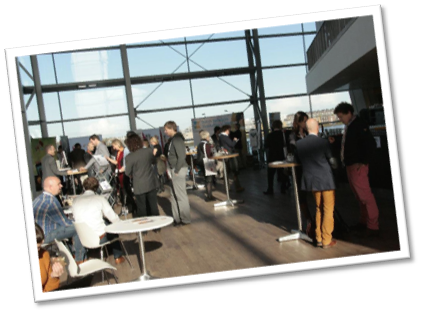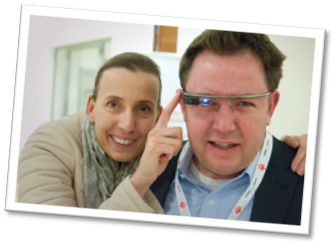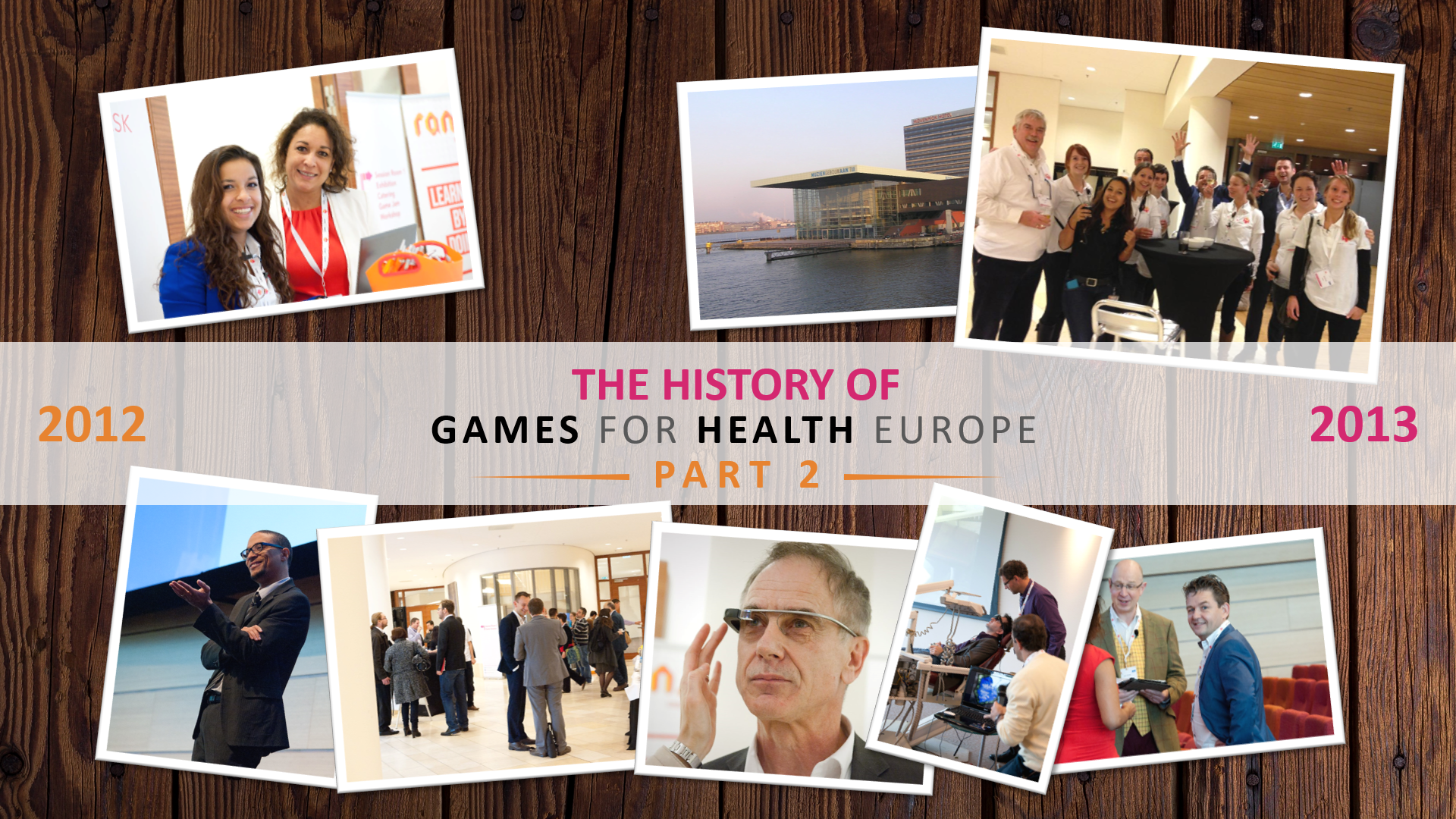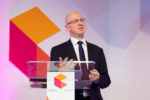The History of GFHEU – Part 2
We’ve arrived in the year 2012, just in the time for the end of the world. Back then gaming on mobile devices was quickly becoming more popular and the Samsung Smart Window was all the rage. Remember when everyone thought that would be the next big thing? In November, we returned to Amsterdam for the second edition of the Games for Health Europe conference.

Many of our visitors and speakers returned for the second year and our community was growing quickly. Not only had GFHEU already become the largest conference for health games in such a short amount of time, but it was also turning into something bigger. In the words of our founder:
“You cannot enter Games for Health Europe since you have been part of it all along; from the first moment you heard of this crazy notion of utilizing games for healthcare and well-being and thought to yourself ‘yes, there’s something to it!’ (…)
The conference is simply the front stage of the GFHEU foundation, which in turn represents a much bigger movement. We are a front for a passionate community, and unlike many other venues, it is the attendees who make the conference, not the other way around.” – Jurriaan van Rijswijk
The second conference covered 3 floors of a concert hall in Amsterdam where more than 70 speakers shared their views on the future of technology and healthcare.
Of course, serious games had a huge presence at the conference as well, some examples of which can be seen here.
Among other things, Bill Crounse from Microsoft also talked about the potential of using the Xbox Kinect within the healthcare industry.
Again, the conference was a resounding success. So when it turned out that the world wouldn’t end, we started planning for the future. What dreams may come?

In the time leading up to the next conference, we organized a DEVcamp to develop new creative solutions for the healthcare industry. This resulted in the creation of several games, including a life mangement game. For Jurriaan this harkened back to the old days of making games himself. It also allowed our community to really leave their mark on the industry.
Later that year we relocated to the KMPG office in Amstelveen for the third edition of the GFHEU conference. The conference again covered a variety of topics like parental mediation of video game play. Wearables were a big thing this year as well, with the introduction of Google glass and VR headsets.
Another addition this year was a conference track which explored research on healthcare and game design. The focus was slowly shifting from showing people the potential of serious games and gamification to supporting industry growth through scientific proof. This will play an even bigger role in our upcoming 2018 conference with the theme ‘prove and move’, but that is a topic for another day. Stay tuned for future posts where we will cover every year leading up to the 8th GFH conference.
The History of GFHEU – Part 2
We’ve arrived in the year 2012, just in the time for the end of the world. Back then gaming on mobile devices was quickly becoming more popular and the Samsung Smart Window was all the rage. Remember when everyone thought that would be the next big thing? In November, we returned to Amsterdam for the second edition of the Games for Health Europe conference.

Many of our visitors and speakers returned for the second year and our community was growing quickly. Not only had GFHEU already become the largest conference for health games in such a short amount of time, but it was also turning into something bigger. In the words of our founder:
“You cannot enter Games for Health Europe since you have been part of it all along; from the first moment you heard of this crazy notion of utilizing games for healthcare and well-being and thought to yourself ‘yes, there’s something to it!’ (…)
The conference is simply the front stage of the GFHEU foundation, which in turn represents a much bigger movement. We are a front for a passionate community, and unlike many other venues, it is the attendees who make the conference, not the other way around.” – Jurriaan van Rijswijk
The second conference covered 3 floors of a concert hall in Amsterdam where more than 70 speakers shared their views on the future of technology and healthcare.
Of course, serious games had a huge presence at the conference as well, some examples of which can be seen here.
Among other things, Bill Crounse from Microsoft also talked about the potential of using the Xbox Kinect within the healthcare industry.
Again, the conference was a resounding success. So when it turned out that the world wouldn’t end, we started planning for the future. What dreams may come?

In the time leading up to the next conference, we organized a DEVcamp to develop new creative solutions for the healthcare industry. This resulted in the creation of several games, including a life mangement game. For Jurriaan this harkened back to the old days of making games himself. It also allowed our community to really leave their mark on the industry.
Later that year we relocated to the KMPG office in Amstelveen for the third edition of the GFHEU conference. The conference again covered a variety of topics like parental mediation of video game play. Wearables were a big thing this year as well, with the introduction of Google glass and VR headsets.
Another addition this year was a conference track which explored research on healthcare and game design. The focus was slowly shifting from showing people the potential of serious games and gamification to supporting industry growth through scientific proof. This will play an even bigger role in our upcoming 2018 conference with the theme ‘prove and move’, but that is a topic for another day. Stay tuned for future posts where we will cover every year leading up to the 8th GFH conference.








